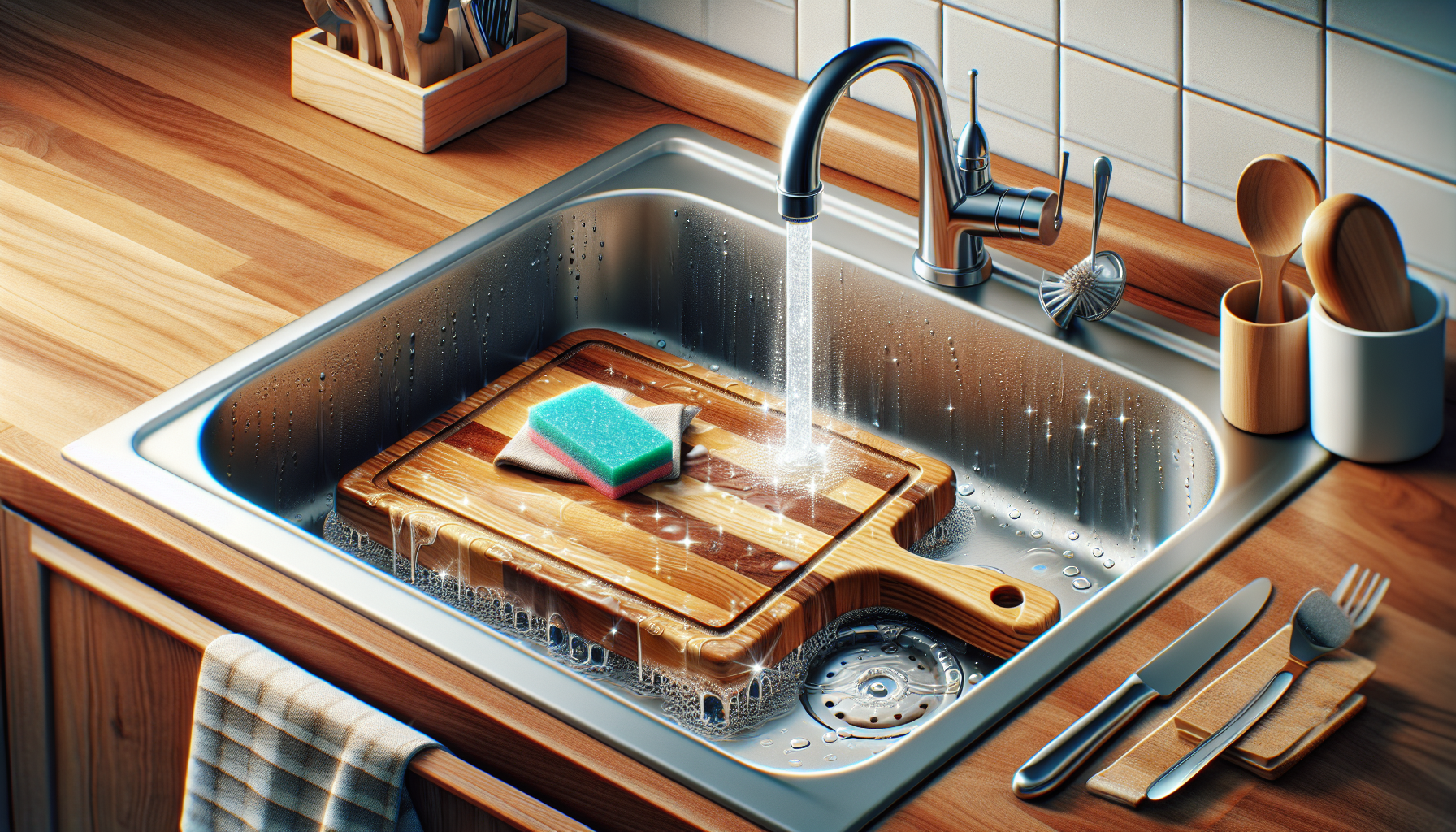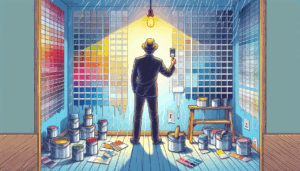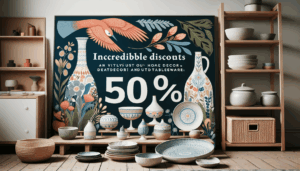If you’re a cooking enthusiast and use wooden cutting boards for slicing your food, it’s vital that you know how to clean them properly to keep them in prime condition. Let’s give you some tips so you can take care of your wooden boards, ensuring they remain clean and safe for kitchen use.
**Basic Cleaning After Every Use**
The first step in properly cleaning your wooden cutting boards is to perform a basic clean after each use. Once you’ve chopped your food, wash the board with warm water and mild soap, using a sponge or soft cloth to remove food residues and grease.
Avoid fully submerging the board in water and make sure to dry it thoroughly with a clean, dry cloth before storing. This basic cleaning will help prevent bacteria build-up and keep your wooden board in good shape.
**Disinfection with White Vinegar**
For a deeper clean and occasional disinfection, you can use white vinegar. Mix equal parts warm water and white vinegar in a spray bottle and spritz the solution onto the wooden board.
Let it sit for a few minutes then wipe the board with a damp cloth to remove vinegar residues. White vinegar is a natural and effective disinfectant that helps eliminate bacteria and germs from the board’s surface without damaging it.
**Removing Odors with Baking Soda**
If your wooden board has absorbed strong odors, such as garlic or onion, you can easily eliminate them with baking soda. Sprinkle baking soda over the board and gently rub with a damp cloth to remove the odors.
Leave it for a few minutes then rinse the board well with warm water and dry thoroughly. Baking soda is a natural deodorant that neutralizes odors, leaving your wooden board fresh and ready for its next use.
**Maintenance with Mineral Oil**
To maintain the beauty and durability of your wooden board, it’s important to regularly maintain it with mineral oil. Apply a thin layer of mineral oil over the board’s surface using a clean cloth and let it absorb for at least 15 minutes.
Then, remove any excess oil with a dry, clean cloth and allow the board to air dry completely before storing. Mineral oil helps to moisturize and protect the wood, preventing dryness and cracks.
**Avoid the Dishwasher and Water Exposure**
It’s crucial to avoid washing your wooden boards in the dishwasher or submerging them in water, as this can damage the wood and lead to warping or cracks. Excess moisture can also encourage mold and bacterial growth, which can compromise the safety of your food. Instead, handwash your boards with warm water and mild soap and dry them thoroughly after each use to ensure their durability and keep them in good condition.
**Air Drying and Proper Storage**
After cleaning and drying your wooden boards, it’s important to let them air dry completely before storing. Avoid placing them directly on damp surfaces or cold stone countertops, as this can lead to mold formation. Instead, stand the boards upright or let them dry on a rack to allow proper air circulation. Storing your wooden boards in a cool, dry place will help maintain them in optimal condition and extend their lifespan.
**Regular Inspection and Replacement When Necessary**
Be sure to regularly inspect your wooden boards and replace them when necessary. Look for signs of wear, cracks, indents, or stains that may indicate the board is nearing the end of its useful life.
If you notice any significant damage, it’s best to discard the board and replace it with a new one to ensure safety and hygiene in your kitchen. Remember, food safety is paramount, and keeping your wooden boards in good condition is essential to protect the health of your family and guests.









